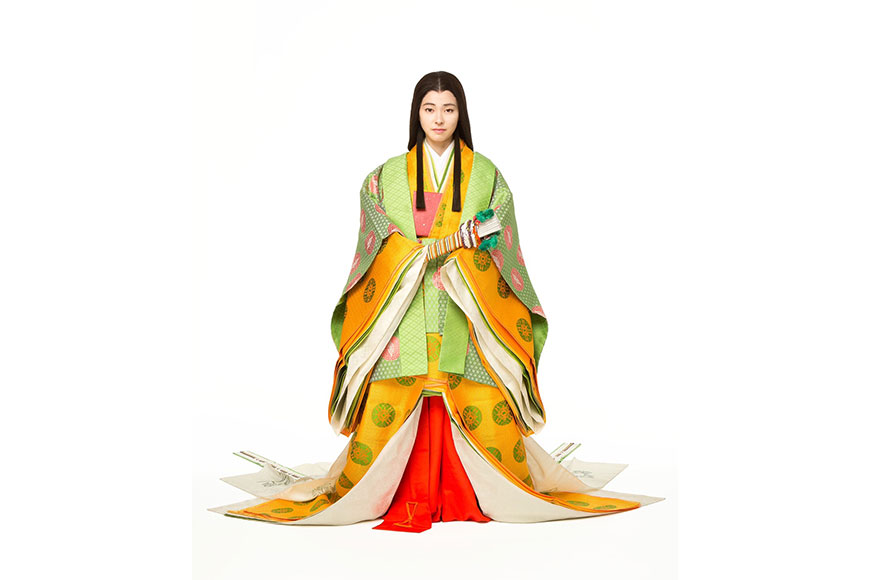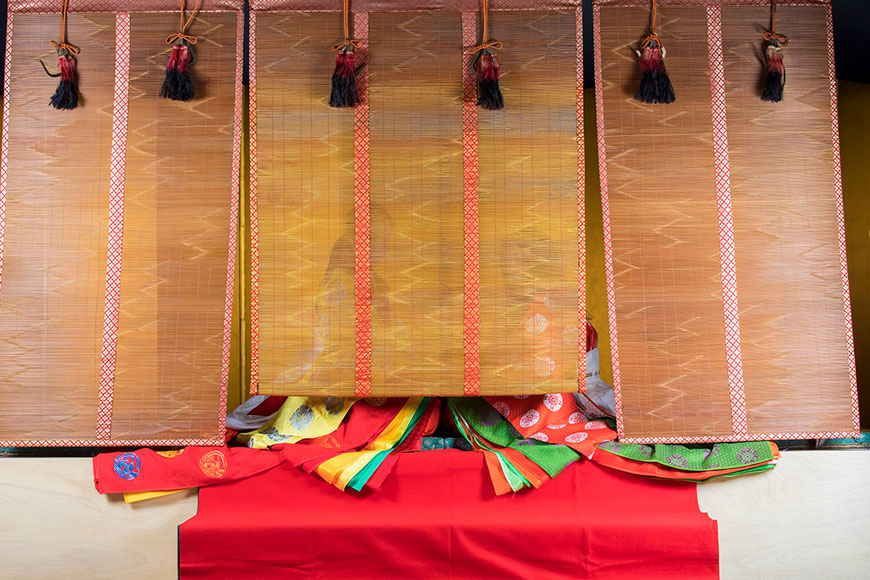Heian Court Culture Experience Program
Home to the ruins of the ancient Saiku Palace, the town of Meiwa is promoting a cultural tourism strategy centered on the legacy of the Heian period (794-1185). In addition to initiatives such as the maintenance of historic sites, the establishment of a dedicated museum, and the organization of the Saio Festival, the town will also offer a program to experience the culture of the Heian Court. One of the most well-known symbols of the Heian culture is the junihitoe, a twelve-layered ceremonial kimono. The contemporary junihitoe, however, is not the same as the one worn in the Heian period. It has in fact been revived in early modern times, and the name junihitoe is also a retroactively given term. It is believed that the kimono worn by the ladies of the Heian Court were longer and more luxurious than today's junihitoe, with some having more than twenty layers. Unfortunately, the original costumes have not survived, and no reproductions are known to exist. In the Heian period, these costumes were not just a fashion item, but also a sign of status. Women and clothes were considered a component of architectural spaces and played a key role in the scenography of events and banquets. During this program, costumes worn by court ladies, from the Heian period to medieval times, will be reproduced from historical documents, and scenographic elements such as the uchiide (the display of women's robes from beneath screens) will recreate the atmosphere of the time. By experiencing the refined culture of the Heian Court, visitors will have the opportunity not only to discover the Heian period and the town of Meiwa, but also to learn more about the fascinating history and culture of Japan.


